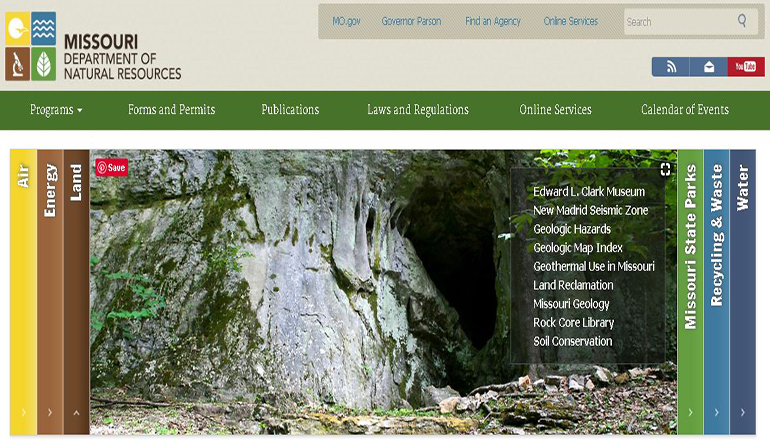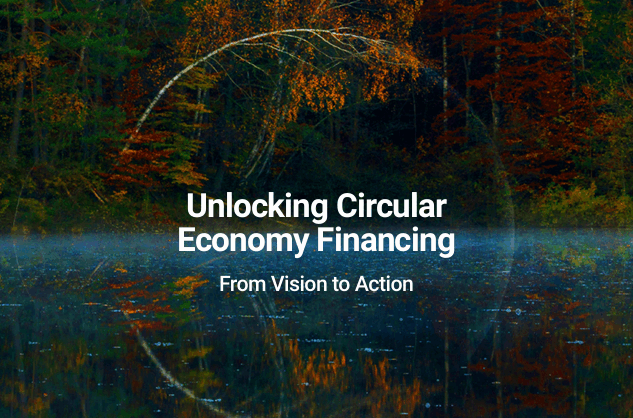MoDNR awards Queen City $1.79M for wastewater project – KTTN

Report on Queen City Wastewater System Upgrade and Alignment with Sustainable Development Goals
1.0 Project Overview
The Missouri Department of Natural Resources has awarded $1.79 million in financing to the city of Queen City for a comprehensive overhaul of its wastewater treatment system. The total project cost is estimated at $2.5 million, with a projected completion date of April 2027. This initiative is critical for modernizing the city’s aging infrastructure and directly supports the achievement of several United Nations Sustainable Development Goals (SDGs), particularly SDG 6 (Clean Water and Sanitation) and SDG 11 (Sustainable Cities and Communities).
2.0 Scope of Improvements and Objectives
The project is designed to enhance the system’s efficiency, extend its operational lifespan, and ensure sustained compliance with regulatory standards. These objectives align with the principles of building resilient and sustainable infrastructure as outlined in SDG 9.
2.1 Planned Enhancements
- Replacement of influent, effluent, and transfer structures.
- Implementation of various system upgrades to improve operational efficiency.
2.2 Primary Objectives
- Maintain consistent compliance with wastewater effluent standards, contributing to SDG Target 6.3 on improving water quality.
- Extend the operational lifespan of the city’s critical wastewater infrastructure.
- Improve the overall efficiency and reliability of the wastewater treatment system.
3.0 Financial Structure and Ratepayer Impact
The project’s funding is a collaborative effort, reflecting SDG 17 (Partnerships for the Goals), involving state-level departments to provide a financially sustainable solution for the community.
3.1 Funding Allocation
- $1,000,000 Grant: Awarded through the Missouri Department of Natural Resources’ Clean Water State Revolving Fund (CWSRF).
- $750,000 Grant: Provided via a Community Development Block Grant from the Missouri Department of Economic Development.
- $717,000 Loan: A low-interest loan from the CWSRF.
3.2 Economic Benefits
The financing model is projected to yield significant savings for Queen City ratepayers, amounting to over $1 million in principal and approximately $327,000 in interest over the 20-year loan term. This makes essential infrastructure upgrades more affordable, supporting SDG 11’s goal of making cities inclusive, safe, resilient, and sustainable.
4.0 Alignment with Sustainable Development Goals (SDGs)
This infrastructure project makes a significant contribution to several key SDGs by addressing fundamental environmental and community needs.
- SDG 6: Clean Water and Sanitation: The project directly addresses Target 6.3 by improving wastewater treatment to reduce water pollution and enhance local water quality. By ensuring the system meets effluent standards, it protects ecosystems and public health.
- SDG 9: Industry, Innovation, and Infrastructure: The overhaul focuses on upgrading and building resilient infrastructure (Target 9.1), which is fundamental for community development and economic stability.
- SDG 11: Sustainable Cities and Communities: By upgrading essential municipal services (Target 11.1), the project enhances the quality of life for residents and reduces the city’s environmental impact (Target 11.6), fostering a more sustainable urban environment.
- SDG 17: Partnerships for the Goals: The funding collaboration between the Department of Natural Resources and the Department of Economic Development exemplifies a multi-stakeholder partnership (Target 17.17) essential for achieving sustainable development.
5.0 Conclusion
The Queen City wastewater system upgrade is a vital public works project that ensures environmental compliance and operational reliability. Its strategic funding and clear objectives demonstrate a strong commitment to sustainable development, directly advancing global goals for clean water, resilient infrastructure, and sustainable communities while providing long-term economic benefits to local citizens.
Analysis of Sustainable Development Goals in the Article
1. Which SDGs are addressed or connected to the issues highlighted in the article?
-
SDG 6: Clean Water and Sanitation
This is the most directly relevant SDG. The entire article focuses on a project to overhaul and modernize a wastewater treatment system in Queen City. The project’s primary goal is to ensure the proper management of wastewater and sanitation services, which is the core mission of SDG 6.
-
SDG 9: Industry, Innovation, and Infrastructure
The article discusses a “$2.5 million project” aimed at a “major overhaul of its wastewater treatment system” and to “modernize the city’s existing infrastructure.” This directly relates to SDG 9, which calls for building resilient infrastructure, promoting sustainable industrialization, and fostering innovation. The project is a clear investment in upgrading and extending the “operational lifespan” of critical public infrastructure.
-
SDG 11: Sustainable Cities and Communities
The project is a municipal initiative to improve essential services for the residents of Queen City. By ensuring a functional and compliant wastewater system, the city is enhancing the quality of life and environmental safety for its community. The article notes that such funding “positively affects our communities, helping them grow and develop for years to come,” which aligns with the goal of making cities and human settlements inclusive, safe, resilient, and sustainable.
2. What specific targets under those SDGs can be identified based on the article’s content?
-
Target 6.3: By 2030, improve water quality by reducing pollution, eliminating dumping and minimizing release of hazardous chemicals and materials, halving the proportion of untreated wastewater and substantially increasing recycling and safe reuse globally.
The project’s objective to achieve “consistent compliance with effluent standards” through “upgrades to wastewater treatment facilities” directly contributes to this target by ensuring that wastewater is properly treated before being discharged, thereby improving water quality.
-
Target 9.1: Develop quality, reliable, sustainable and resilient infrastructure, including regional and transborder infrastructure, to support economic development and human well-being, with a focus on affordable and equitable access for all.
The article describes a “major overhaul” and modernization of the city’s wastewater infrastructure. The project aims to “extend the operational lifespan of the wastewater system” and “improve efficiency,” which are key aspects of developing reliable and sustainable infrastructure as specified in this target.
-
Target 11.1: By 2030, ensure access for all to adequate, safe and affordable housing and basic services and upgrade slums.
Wastewater treatment is a fundamental basic service for any community. The project in Queen City is a direct action to maintain and improve this service for its residents. The financing structure, which is “projected to save Queen City ratepayers more than $1 million in principal and approximately $327,000 in interest,” also touches upon the affordability aspect of providing these basic services.
3. Are there any indicators mentioned or implied in the article that can be used to measure progress towards the identified targets?
- For Target 6.3: The article implies progress towards Indicator 6.3.1 (Proportion of wastewater safely treated). The project’s goal to “maintain consistent compliance with effluent standards” serves as a direct measure of safe wastewater treatment. Achieving this compliance is a clear indicator that the proportion of safely treated wastewater is increasing or being maintained at a high level.
- For Target 9.1: The article provides a clear indicator related to financial investment in infrastructure. The specific monetary values mentioned—“$1.79 million” in funding, a total project cost of “$2.5 million,” a “$1 million grant,” and a “$717,000 low-interest loan”—are quantitative indicators of the investment being made to develop and upgrade local infrastructure.
- For Target 11.1: An implied indicator is the improvement in the quality and reliability of basic services. The project itself, described as a “major overhaul” that will “extend the operational lifespan of the wastewater system,” is an indicator of tangible action being taken to ensure the community has continued access to this essential service. The financial savings for ratepayers also serves as an indicator of efforts to maintain affordability.
4. Table of SDGs, Targets, and Indicators
| SDGs | Targets | Indicators |
|---|---|---|
| SDG 6: Clean Water and Sanitation | Target 6.3: Improve water quality by reducing pollution and increasing the proportion of safely treated wastewater. | The project’s goal to achieve “consistent compliance with effluent standards” directly measures the safe treatment of wastewater (related to Indicator 6.3.1). |
| SDG 9: Industry, Innovation, and Infrastructure | Target 9.1: Develop quality, reliable, sustainable and resilient infrastructure. | Financial investment in infrastructure, as evidenced by the “$2.5 million project cost” and the “$1.79 million” in allocated funds. |
| SDG 11: Sustainable Cities and Communities | Target 11.1: Ensure access for all to adequate, safe and affordable basic services. | The “major overhaul” of the wastewater system to “extend its operational lifespan” indicates an improvement in a basic service for the community. The projected savings for ratepayers addresses the affordability aspect. |
Source: kttn.com
What is Your Reaction?
 Like
0
Like
0
 Dislike
0
Dislike
0
 Love
0
Love
0
 Funny
0
Funny
0
 Angry
0
Angry
0
 Sad
0
Sad
0
 Wow
0
Wow
0















































/environment-climate-change-and-health-(ech)/water-sanitation-hygiene-and-health-(wsh)/landfill-tuvalu-36092.tmb-1200v.jpg?sfvrsn=5c21fe40_1#)


.jpg.webp?itok=0ZsAnae9#)

























